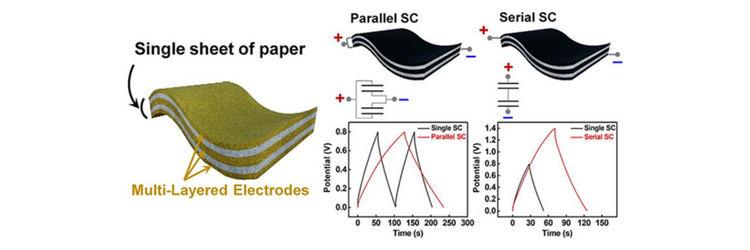Flexible electronics consisting of electrodes with plastic or metal foil as substrates power wearables. But there’s a downside. Plastics have poor adhesion and low durability, while metal foils make devices bulky and less flexible. Paper is a promising alternative. Paper has randomly distributed fibers providing a large surface area for depositing active electrode material, delivering excellent electrochemical properties.
Researchers from Chung-Ang University recently fabricated a structure comprising multi-layer electrodes vertically integrated within a single sheet of paper. The design overcomes the problems associated with stacked sheets yet has the inherent advantages of a paper-based substrate. Their work was published in Volume 454, Part 2 of the Chemical Engineering Journal on 15 February 2023.
The researchers developed various paper-based supercapacitors, devices by stacking multiple sheets, acting as positive and negative electrodes and separators. However, the arrangement increases device size and resistance and forms creases, peels off, and slips over each other, which deteriorates performance.
The process included:
- A water-repellent paraffin wax layer was printed and heated on both sides of a filter paper, forming a water-friendly channel surrounded by a wax barrier within the paper
- The paper was successively dipped in gold nanoparticle and gold enhancement solutions, which penetrated the channel via capillary action, resulting in a gold electrode in the middle of the paper
- Similar electrodes were then fabricated on the top and bottom surfaces of the paper to obtain a multi-layer electrode platform
The researchers completed the supercapacitor design by depositing manganese dioxide on the gold-paper electrode and immersing it in a polyvinyl alcohol–sodium sulfate gel electrolyte solution. They characterized the manganese dioxide-gold-paper electrodes when solidified using various electrochemical measurement techniques.
The supercapacitor design showed low electrical resistance, high foldability, and good mechanical strength. Ir demonstrated high energy storage with maximum areal energy and power densities of 13.73 μW-hr-cm-2 and 1.6 mW-cm-2, respectively, and retained its storage capacity even after undergoing 6000 charge-discharge cycles.

